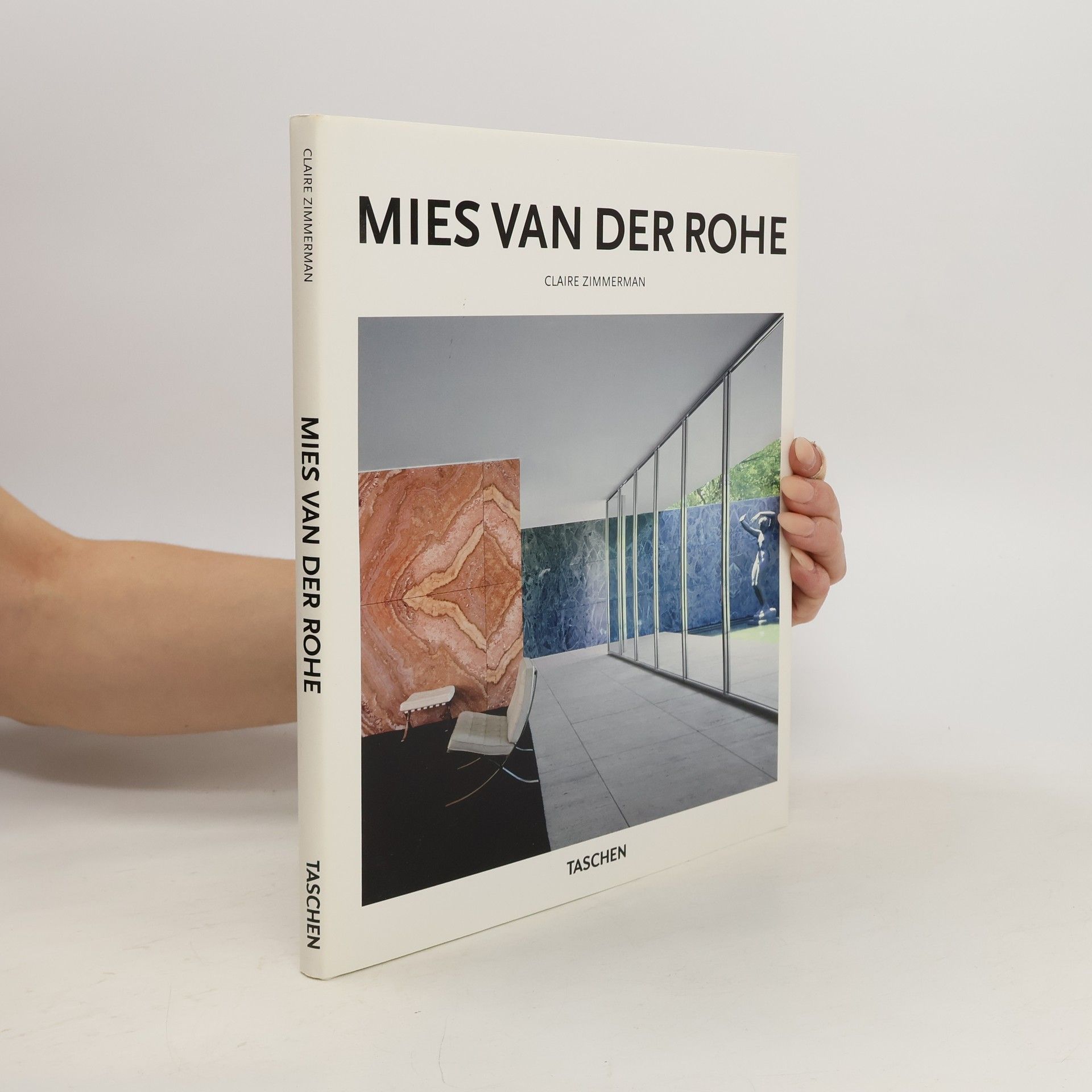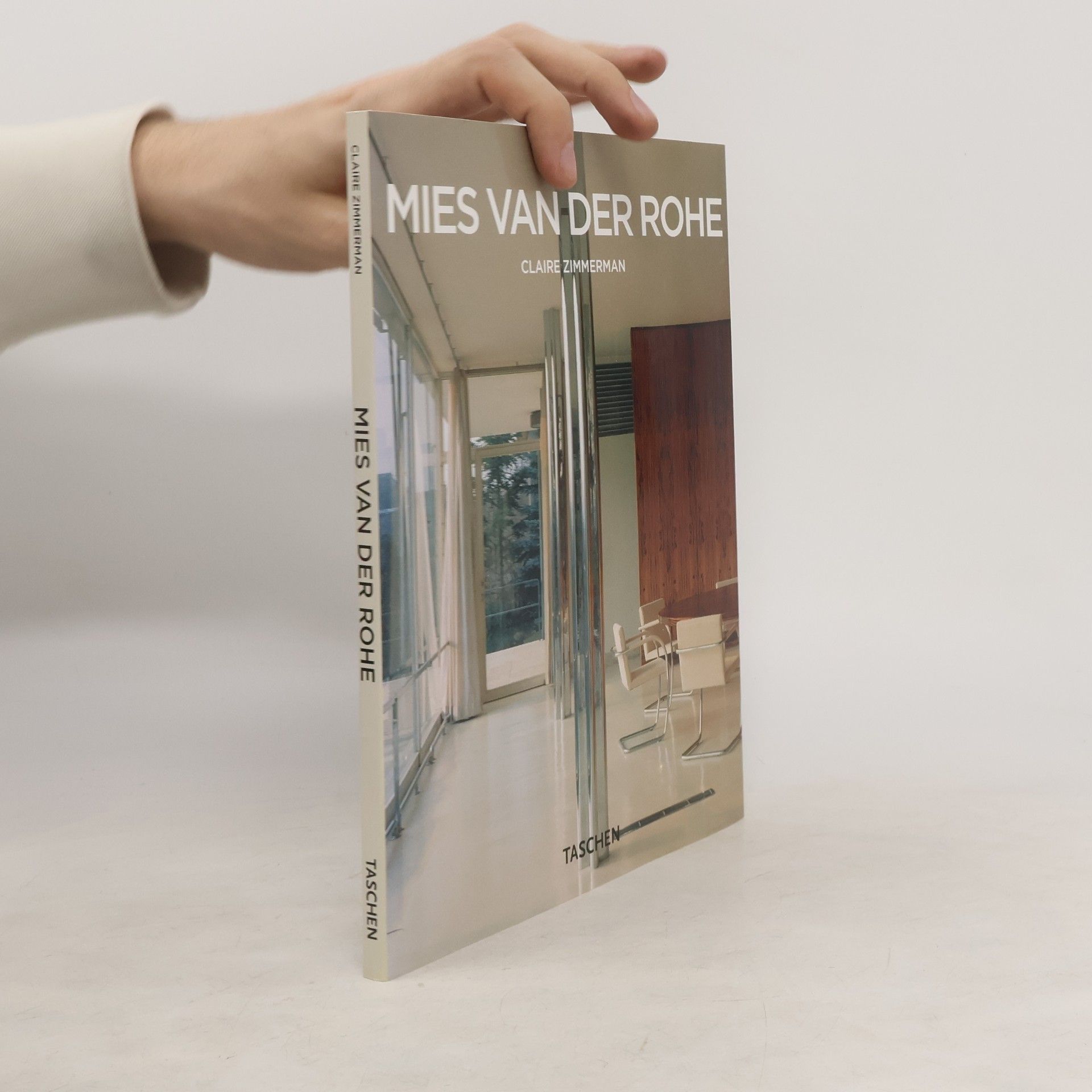Ludwig Mies van der Rohe (1886-1969) war einer der Gründungsväter der modernen Architektur. Er entwarf den Barcelona Pavilion (1929), das Farnsworth House in Plano, Illinois (1945-1951) und das Seagram Building in New York (1954-1958) und stand damit für einen neuen architektonischen Stil. Sein Motto weniger ist mehr ist weltbekannt; er vertrat eine neue Reinheit im architektonischen Ausdruck, die nicht im Repertoire anderer Bauhaus-Mitglieder zu finden war. Dabei war es nicht sein Ziel, für Menschen am Existenzminimum zu bauen er wollte in Hinblick auf Technik und Ästhtetik wirtschaftlich arbeiten und unterstrich diesen Anspruch mit dem Einsatz von Materialien wie Stahl und Glas. Obwohl ihm die extreme Reduzierung von Form und Material einige Kritik einbrachte, versuchen viele, seinen originellen und eleganten Stil zu kopieren in den meisten Fällen erfolglos. Dieses Buch zeigt mehr als 20 seiner Projekte zwischen 1906 und 1967; von seinen frühen Arbeiten in Berlin bis zu seinen wichtigsten Bauten in America. Weniger ist mehr. Perfektion im Purismus.
Claire Zimmerman Bücher




Architecture Against Democracy
Histories of the Nationalist International
Examining architecture's foundational role in the repression of democracy Reinhold Martin and Claire Zimmerman bring together essays from an array of scholars exploring the troubled relationship between architecture and antidemocratic politics. Comprising detailed case studies throughout the world spanning from the early nineteenth century to the present, Architecture against Democracy analyzes crucial occasions when the built environment has been harnessed as an instrument of authoritarian power. Alongside chapters focusing on paradigmatic episodes from twentieth-century German and Italian fascism, the contributors examine historic and contemporary events and subjects that are organized thematically, including the founding of the Smithsonian Institution, Ellis Island infrastructure, the aftermath of the Paris Commune, Cold War West Germany and Iraq, Frank Lloyd Wright's domestic architecture, and Istanbul's Taksim Square. Through the range and depth of these accounts, Architecture against Democracy presents a selective overview of antidemocratic processes as they unfold in the built environment throughout Western modernity, offering an architectural history of the recent "nationalist international." As new forms of nationalism and authoritarian rule proliferate across the globe, this timely collection offers fresh understandings of the role of architecture in the opposition to democracy. Contributors: Esra Akcan, Cornell U; Can Bilsel, U of San Diego; José H. Bortoluci, Getulio Vargas Foundation; Charles L. Davis II, U of Texas at Austin; Laura diZerega; Eve Duffy, Duke U; María González Pendás, Cornell U; Paul B. Jaskot, Duke U; Ana María León, Harvard U; Ruth W. Lo, Hamilton College; Peter Minosh, Northeastern U; Itohan Osayimwese, Brown U; Kishwar Rizvi, Yale U; Naomi Vaughan; Nader Vossoughian, New York Institute of Technology and Columbia U; Mabel O. Wilson, Columbia U.
Mies van der Rohe, 1886-1969 : the structure of space
- 96 Seiten
- 4 Lesestunden
Er prägte das Motto „weniger ist mehr“ – Ludwig Mies van der Rohe (1886–1969) war einer der Gründerväter der modernen Architektur und beeinflusste die Ästhetik des Städtebaus im 20. Jahrhundert maßgeblich, wenn auch nicht immer unumstritten. Mies van der Rohe propagierte auf der Suche nach einer elementaren Wahrheit reine Formen und Proportionen . Anhand von moderner Technologie und neuesten Materialien konzipierte er Bauwerke von puristischer Schlichtheit wie zum Beispiel das Seagram Building oder Farnsworth House . Seine Kritiker wandten ein, dass dieser extreme Ansatz monotone und kaum voneinander unterscheidbare Stadtbilder hervorbringen würde, während andere in ihm den Meister einer eleganten Essenz sahen. Dieser Band stellt über 20 von Mies van der Rohes Projekten aus der Zeit zwischen 1906 und 1967 vor und beleuchtet seine bahnbrechenden Ideen sowie seinen Einfluss in Amerika und Europa.